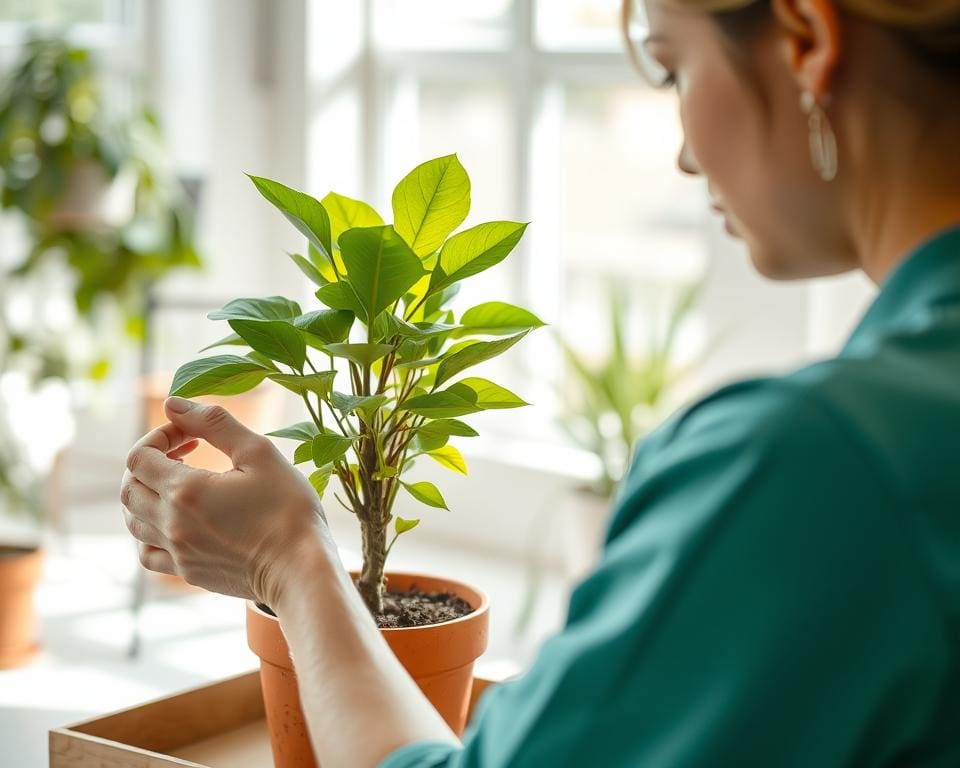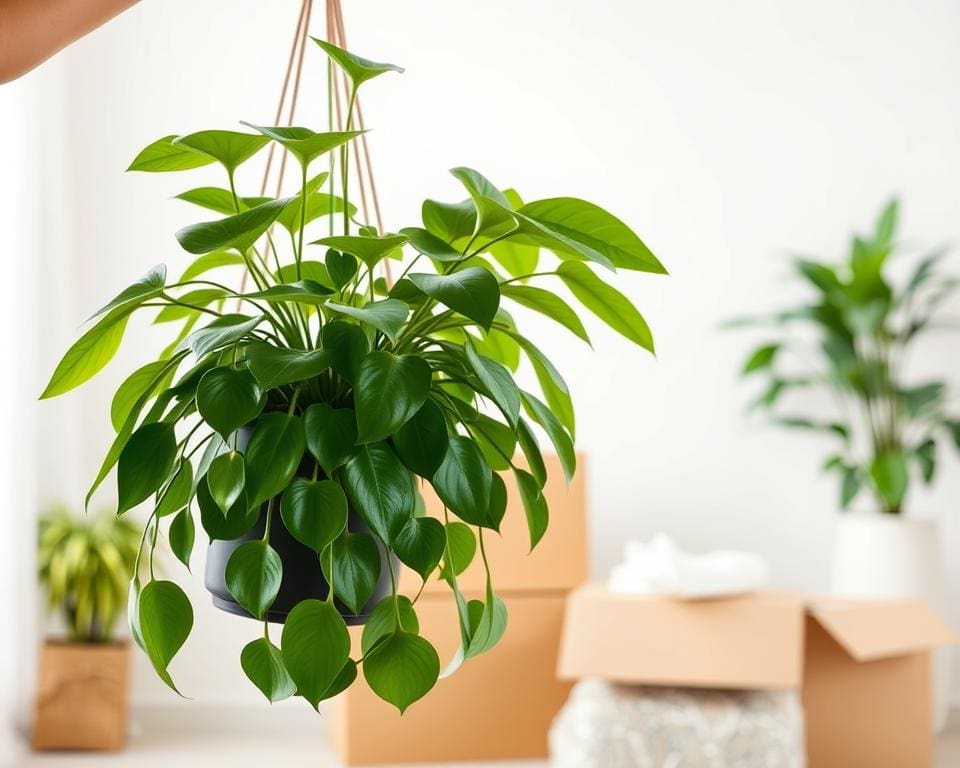Moving house is not just about shifting furniture and personal belongings; it’s also about safeguarding your beloved plants. For many, these green companions provide emotional comfort and enhance the atmosphere of a home. Understanding how to move house with your plants can make a significant difference in their health and vitality during the transition. In this houseplant moving guide, we will delve into the common concerns homeowners face when relocating their greenery while also highlighting the psychological benefits of keeping plants in living spaces. As we progress, you will discover practical strategies and tips specifically tailored for moving plants in the UK, ensuring that your cherished foliage flourishes in its new environment.
Understanding the Needs of Your Plants During Relocation
Relocating plants can be a challenging but rewarding experience. Understanding their needs throughout this process is crucial for ensuring their health and vitality. Properly assessing plant health before the move allows you to identify potential issues and address them accordingly. This proactive approach sets the stage for successful relocation while minimising stress on your green companions.
Assessing Plant Health Before the Move
Before the actual move, assessing plant health is essential to determine how well your plants can cope with the upcoming transition. Look for signs of distress, such as discoloured leaves or wilting stems. Inspect the roots for any signs of rot or pest infestations, which can weaken the plants during relocation. Techniques such as examining leaves for unusual spots or checking the soil moisture levels are effective ways to gauge overall vitality.
Common Stressors for Plants When Moving
During the moving process, several common stressors for plants can significantly impact their well-being. Changes in light exposure can disrupt their natural growth patterns, leading to shock. Temperature fluctuations throughout transport may place further strain on their health. The physical jolting experienced during transportation can also harm delicate roots and stems. Recognising these stressors enables you to prepare adequately and take steps to mitigate potential challenges for your plants.

How To Move House With Your Plants: Step-by-Step Guide
Embarking on a journey to a new home with your cherished plants requires meticulous planning and care. This step-by-step guide will illuminate the processes involved in preparing plants for travel and the essential packing techniques for different plant types. Ensuring your botanical friends arrive at their new destination healthy and vibrant is not just an act of duty, it’s an expression of love.
Preparing Your Plants for Travel
Prior to the move, devote time to preparing plants for travel. Begin by assessing their health, removing any dead leaves or damaged stems. Consider giving them a light pruning to encourage growth during the transition. Water your plants adequately a day before moving, ensuring they are hydrated but not overly wet. If necessary, re-pot larger plants into more manageable-sized pots, using fresh potting soil to enhance their stability.
Packing Techniques for Different Plant Types
Effective packing techniques for plants vary depending on their type. For succulents, gentle padding with newspaper will provide ample support while preventing damage. Ferns, which tend to be delicate, should be wrapped in damp paper to maintain moisture. Flowering plants require special attention; use cardboard boxes lined with bubble wrap to cushion the pots and secure any blooms with soft ties. Consider using specialised plant transport boxes for larger specimens, ensuring proper ventilation to avoid overheating during transit.
Tips for Transporting Plants Safely
Transporting plants requires thoughtful planning to ensure their safety throughout the journey. The right choices can significantly impact their health during transit. Focusing on the vehicle used and maintaining an appropriate environment will contribute to the successful relocation of your green companions.
Choosing the Right Vehicle for Plant Transport
Selecting the right vehicle for plant transport is fundamental in safeguarding your plants. Whether using a personal vehicle or hiring a professional moving service, consider the following:
- Space: Ensure ample space for your plants to avoid crowding, which can damage delicate leaves and stems.
- Stability: A stable vehicle protects plants from excessive movement, preventing breakage or soil spillage.
- Ventilation: Proper airflow prevents overheating, especially during warmer months. Vehicles with open windows or vents allow fresh air circulation.
Temperature Control During Transit
Temperature control is vital for maintaining plant health during transportation. Extreme fluctuations can lead to stress or damage. Employ these tips for managing the environment:
- Temperature-regulating devices: Consider using heat packs or coolers depending on the season to keep plants at an optimal temperature.
- Strategic scheduling: Plan your journey during cooler parts of the day to minimise exposure to harsh sun or cold.
- Monitor conditions: Regularly check the temperature inside the vehicle to ensure it remains stable throughout the journey.
Relocating Plants: Adjusting to New Environments
After the tumultuous journey of moving, your plants require special care to thrive in their new surroundings. This phase is crucial for acclimatising plants, allowing them to adapt gradually to different conditions. A thoughtful approach aids in minimising stress and promotes healthy growth in their fresh environment.
Acclimatising Your Plants to Their New Home
Begin by introducing your plants to their new environment slowly. Start by placing them in a sheltered location within your home, away from harsh direct sunlight and strong drafts. Over the coming days, gradually expose them to more light and their permanent position. Monitor their response to these changes, looking for signs of stress such as wilted leaves or yellowing foliage. This careful acclimatisation helps prevent shock and fosters a smoother transition.
Best Practices for Positioning Plants in a New Space
Correct placement is vital for the health of your plants. Observe the light levels in different areas of your home, determining which spots receive bright, indirect light versus low light. Choose locations based on the specific needs of each plant. For example, succulents thrive in bright sunlight while ferns prefer shadier, more humid conditions. Consider the temperature fluctuations in various rooms too, keeping in mind that most plants enjoy a stable environment. By applying the best practices for positioning plants, you create an ideal habitat for them to flourish.
Moving Plants UK: Strategies for a Smooth Transition
Relocating within the UK can pose unique challenges when it comes to moving plants. To achieve a smooth transition, it is crucial to plan ahead and understand the specific needs of your foliage during this process. For instance, seasonal changes can significantly impact your plants’ health, making it essential to schedule your move during milder weather. This way, you can mitigate stress and keep your plants thriving through the relocation.
Another effective strategy involves consulting local plant retailers or horticultural societies, such as the Royal Horticultural Society, which offer valuable insights tailored to UK-specific conditions. Knowledgeable retailers can provide you with advice on suitable plant protection methods and localised tips for transporting your greenery, ensuring that you have all the information necessary for a successful move.
Lastly, leverage UK-specific networks for plant enthusiasts, which can serve as a platform to share experiences and gather practical solutions from fellow plant lovers. Engaging with online communities can equip you with strategies for moving plants UK-wise that have been proven effective by others. With thoughtful planning and support, you can make your plant moving experience an inspiring journey, allowing your beloved greenery to flourish in its new home.









